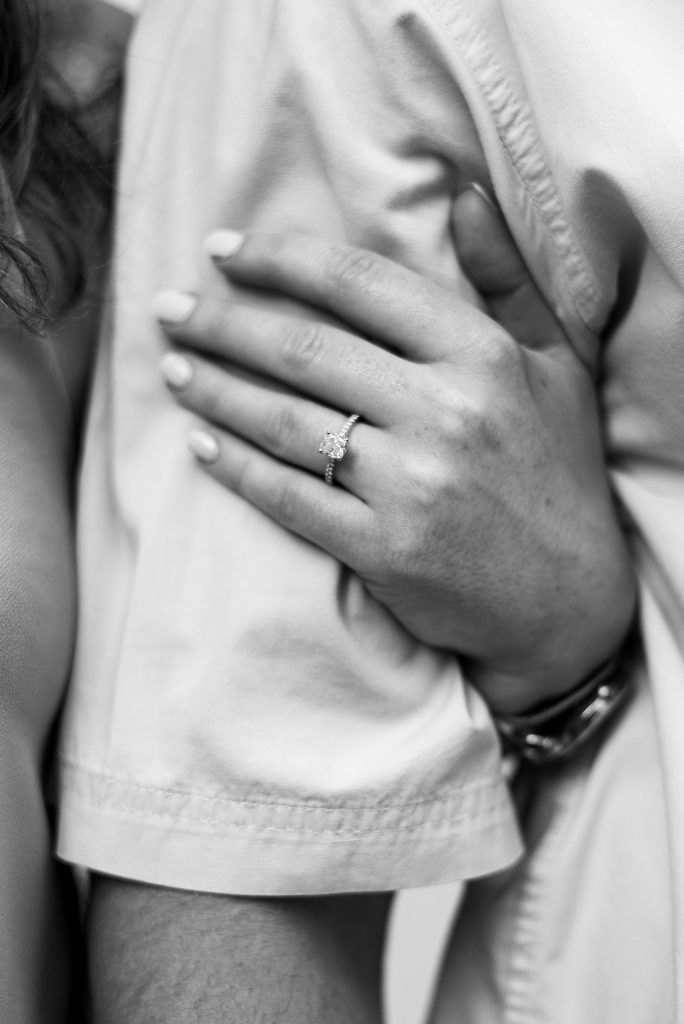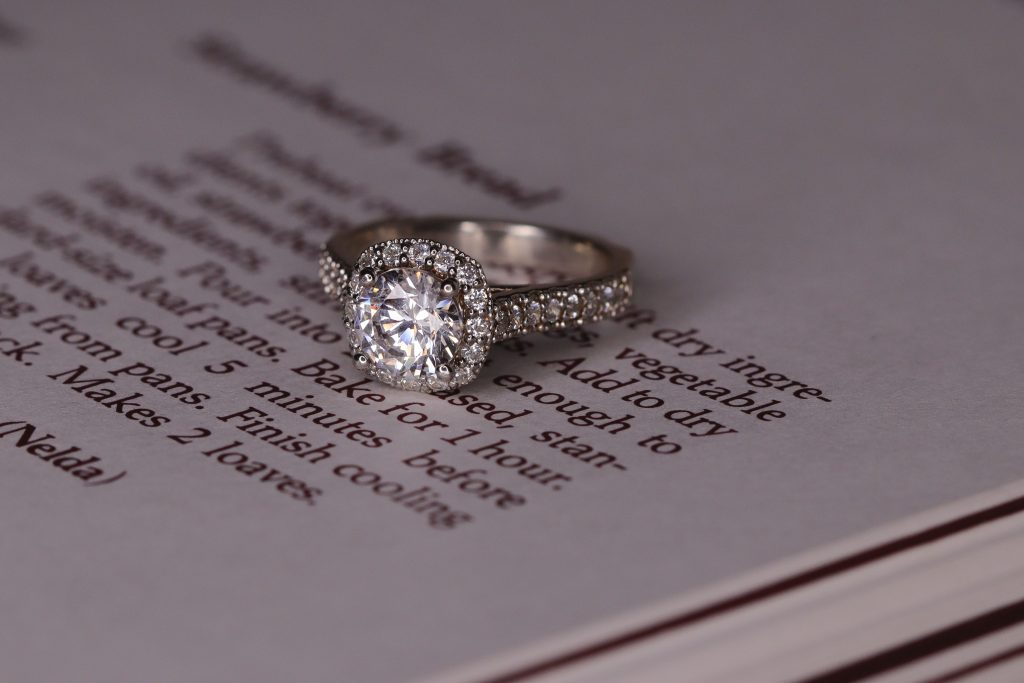February 28, 2021
The GIA grades diamond color on a scale that runs from D-Z. The diamond grading process is intense and technical, with several gemmologists testing and analyzing the diamonds before reaching an agreed grade. To establish diamond color, the diamond is observed in comparison with ‘master stones’ in optimum lighting.

The scale is split into color quality sub-sections: colorless diamonds (D-F), near colorless (G-I), faint (K-M), very light (N-R) and light (S-Z).
Diamonds in the near colorless category are consistently the most popular for engagement rings and other types of diamond jewellery. Let’s take a look at why.

The Budget/Beauty Balance
Most buyers are looking for the sweet spot between budget and beauty – this means getting the best looking diamond without over spending. Diamonds in the near colorless category may have small hues of yellow, brown or grey, but these are barely perceptible in the main body of the diamond (if at all). Despite this, choosing a diamond in the near colorless category can save you thousands VS a diamond with similar qualities but a higher color grade.
Metals can be used to make a diamond appear comparatively whiter – yellow and rose gold are a popular choice for improving the perceived color of a diamond.
What do Near Colorless Diamonds Look Like?
Viewed in all lighting conditions, a diamond in the near colorless category will not display a strong presence of color. Those who are particularly perceptible to color may be able to detect slight hues in an I color diamond however this is very rare.
Near colorless diamonds can be set in either white or yellow tone metals as they do not require a setting to make them look brighter. For this reason, they offer flexibility to buyers and a real freedom when it comes to choosing the perfect setting.

Do Colorless Diamonds Sparkle More than Near Colorless?
Primarily, the sparkle of a diamond is dictated by the cut quality followed by clarity and finally color. Cut is king when it comes to unleashing the potential for fire and brilliance within a diamond and these are the optical attributes that result in sparkle!
Color has less impact on sparkle – a colorless diamond will not sparkle more than a near colorless. When compared side by side, an expert may notice a near colorless diamond has a slightly warmer tone but again, the difference is negligible and very few people can identify the difference.
Are Near Colorless Diamonds Worth it?
For particularly budget conscious shoppers, diamond color is a great area to pull back the budget – settings and cut quality can both give the illusion of a brighter whiter diamond. Even a K color diamond can look beautiful in the right setting.
The popularity of near colorless diamonds rests in the assurance that there will be no strong color and thus the options for settings, shapes and styles is opened up. They are a highly recommended category, particularly for engagement rings.
*Collaborative post

